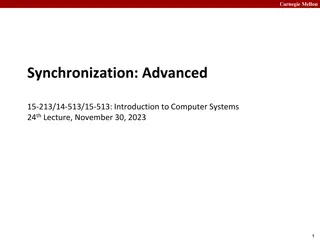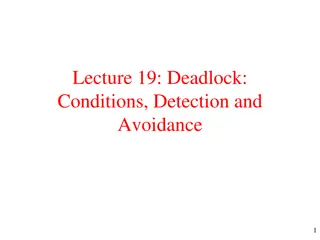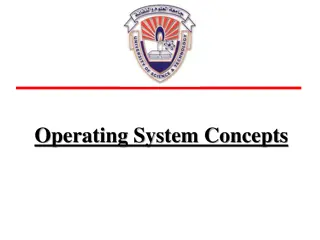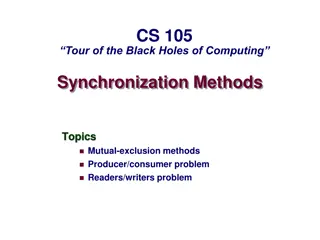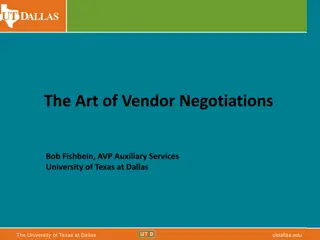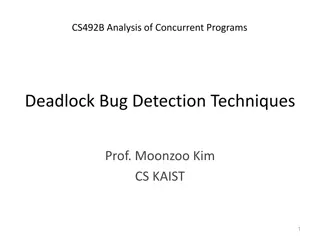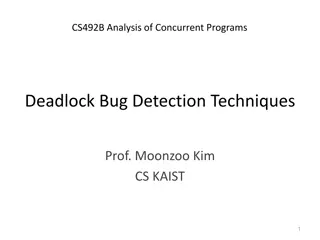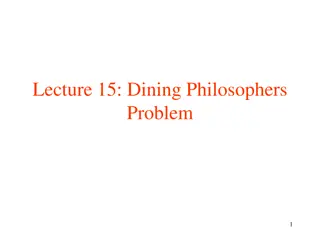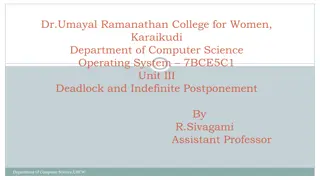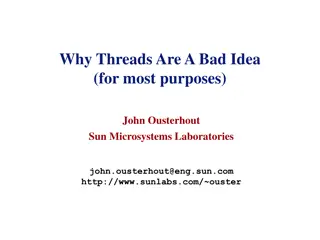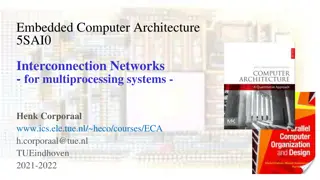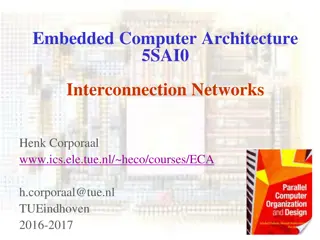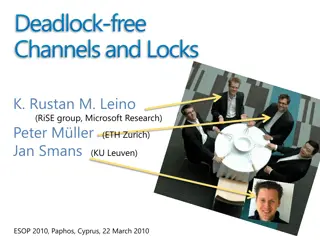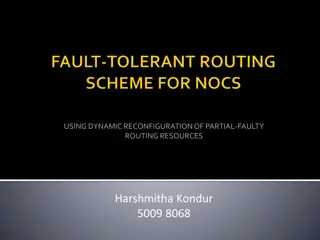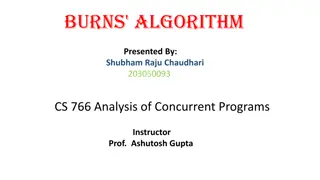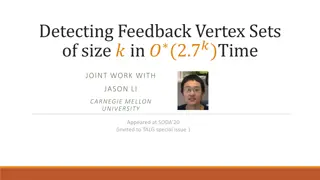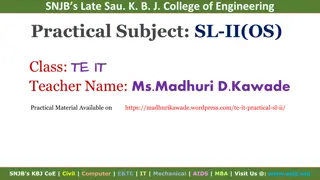
Understanding Deadlock Conditions in System Design
Learn about the four necessary conditions for a deadlock to occur in a system: Mutual Exclusion, Hold and Wait, No Preemption, and Circular Wait. These conditions, known as the Coffman conditions, are crucial in understanding and preventing deadlocks in system design.
Download Presentation

Please find below an Image/Link to download the presentation.
The content on the website is provided AS IS for your information and personal use only. It may not be sold, licensed, or shared on other websites without obtaining consent from the author. If you encounter any issues during the download, it is possible that the publisher has removed the file from their server.
You are allowed to download the files provided on this website for personal or commercial use, subject to the condition that they are used lawfully. All files are the property of their respective owners.
The content on the website is provided AS IS for your information and personal use only. It may not be sold, licensed, or shared on other websites without obtaining consent from the author.
E N D
Presentation Transcript
Deadlock A deadlock situation on a resource can arise if and only if all of the following conditions hold simultaneously in a system: Mutual exclusion Hold and wait or resource holding No preemption Circular wait These four conditions are known as the Coffman conditions from their first description in a 1971 article by Edward G. Coffman, Jr.
Mutual Exclusion At least one resource must be held in a non-shareable mode Otherwise, the processes would not be prevented from using the resource when necessary Only one process can use the resource at any given instant of time
Hold and Wait / Resource Holding A process must currently hold at least one resource It also requests additional resources which are being held by other processes
No Preemption a resource can be released only voluntarily by the process holding it
Circular Wait Each process must be waiting for a resource which is being held by another process This other process is waiting for the first process to release the resource. In general, there is a set of waiting processes P = {P1, P2, , PN} such that P1is waiting for a resource held by P2 P2is waiting for a resource held by P3 and so on until PNis waiting for a resource held by P1.

